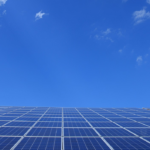There’s no doubt that winter certainly cuts the population in half when it comes to opinion. Some love it, others can’t deal with the cold. One group that are pretty consistent with their views are photographers. There’s nothing that quite beats a winter scene, particularly if you are investing in good photo printing as well.
Bearing this in mind, today we are going to focus on how to snap your best photos during your winter travels. While the results can be amazing, at the same time it’s not an easy art by any stretch of the imagination.
Let’s now take a look at some top suggestions to help you on your way.
Your camera needs to be cold to start with
This first suggestion almost sounds ridiculous, but give us time. One of the main problems a lot of photographers face is their camera becoming foggy as soon as they pull it out for a winter shoot. This happens for exactly the same reason it does when your glasses are put in the same environment.
Of course, when it comes to your camera, the effects can be much, much worse. The condensation can work its way into the lens, and this can cause some damage which is very expensive to say the least.
As such, make sure that it’s relatively cold before you start to shoot. We’re not saying you should hide it in the freezer, but don’t go out of your way to keep it warm either.
…There is a caveat
However, there is a caveat from the above. While the camera itself should be kept cold, the same rules don’t apply when it comes to batteries. These will drain very quickly if they are too cold, meaning that the best advice is to keep them warm until you need to use them.
If you are using some of the newer lithium ion batteries the problem is certainly less common. For anyone else, proceed with caution.
Beware of the footprint-factor
Something else you need to be wary of is your footprints. In normal conditions, this doesn’t matter. When there’s a field full of snow, suddenly that field is full of your size-8 prints as well. If you’re not careful, these can quickly become embedded in your photos.
It would be fair to say that even the most patient photo editor in the world would struggle to remove these at home!
Reverse the steps when you get home
At the start of this guide we talked about the importance of keeping your camera cool when you get out into the field, just to prevent the chances of condensation occurring. Well, when you return home, you need to reverse the steps in order to protect your camera. You need to gradually warm up your camera, just so condensation doesn’t occur for the same reasons. The best method is to keep the camera in your bag for a while once home, which will at least allow it to slowly return to room temperature for when you start the editing process.


